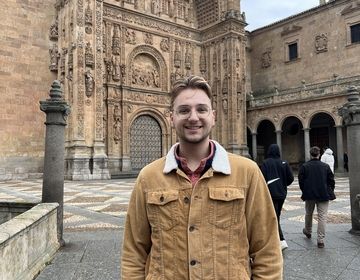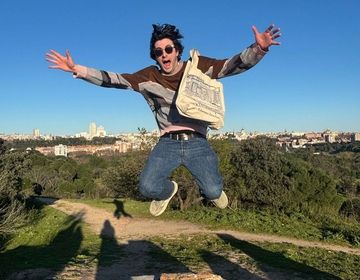Semana Santa
If you want a truly Spanish experience, I highly recommend heading to Andalucia for Semana Santa! As teachers, we are given about a week and a half off, which is plenty of time to travel around and explore all the sights! Last time that I lived in Spain (Huelva), I used the long break to visit my cousins who lived in Moldova, a decision I don't regret since they moved back to the U.S. soon afterwards. However, having lived in Andalucia and missed this enormous celebration, I always had a desire to go back and experience what I missed out on. Fast forward a few years, I 'm now living in Madrid and voila! I have the chance to actually go experience it.
For my trip, I took the train from Cordoba to Sevilla and then took a bus from Sevilla to Huelva to visit some old friends and enjoy the beach. Each city had some amazing processions and beautiful sights to enjoy. Cordoba was perhaps my favorite for viewing the processions as it was easily to find them just by listening for the sound of the marching bands in the streets and was also less crowded than Sevilla, however, Sevilla did have more to offer.
Semana Santa is the week before Easter (the dates of which change depending on when the first full moon of spring is, so it can be either at the end of March or towards the beginning of April). Many people also have the Friday before that week and the Monday after off as well. In Spain, Semana Santa is traditionally celebrated with religious processions filling the streets. This is most popular in Andalucia where the processions can start at 5:00 in the afternoon and easily last until 2:00 in the morning. Several of the larger churches near the city centers will sponsor a procession, which will typically leave from their church and finish at the city's cathedral. Each procession is made up of penitents (people dressed up in long robes and tall hoods), a float of Jesus, which is followed by a float of Mary, one or two marching bands playing somber music, and sometimes women dressed in traditional black veils and black dresses to mourn. The floats are carried by many people underneath. All of this adds up to quite a scene flowing through the streets of Andalusian cities!
If you are interested in enjoying this uniquely Spanish tradition, here are some of my tips for Semana Santa:
1. Make sure you book in advance. Everyone in Spain travels during this week since they have a bit of time off. A lot of tourists also travel to Andalucia during this time for the Semana Santa experience.
2. Stay in Sevilla for at least the Thursday and Good Friday of Easter. Plan to stay up most of the night as you watch the processions continue on to dawn on these days. It's an incredible experience to hear the cries of the women following the processions and the bursts of mournful songs that come from people on the balconies.
3. Sight see during the first part of the day and then plan to watch the processions in the late afternoon and evening.
4. Pick up a processional schedule booklet from the local tourist information office as soon as you get into the city. This will give you all the times and locations of the processions throughout the week.
5. Also pick up the schedule of tourist attractions as many are either closed or have reduced hours through Semana Santa.
5. When in doubt, always go to the cathedral. All of the processions will pass through the cathedral of each city, so if you can't figure out where all of the processions are, just plant yourself outside the cathedral to watch.
6. Bring sunscreen!! It might be early spring time, but the sun is quite strong here in Spain and you can get a pretty bad burn just walking around the city.
7. Pack a small bag with water and snacks, especially if you plan on doing a bit of walking around or want to see several processions at once. It's easy to get dehydrated with all that sun and you won't want to ruin the processional experience by being hungry while watching. Just don't go over board or you might have trouble getting in to some of the castles and museums to visit.
8. Bring a light sweater or jacket. The temperature changes quite drastically in Spain with the sun, so you'll probably be a little chilly in the morning, evening, or sometimes in the shade too, even if it's quite warm in the middle of the day.
9. Make sure you have a camera! This is something you'll definitely want to capture on film.
10. Enjoy! =)
Related Posts
Navigating Madrid: My Teaching Abroad Experience with CIEE & My Advice
¡Hola! My name is Richie and I just finished my second year as an auxiliar de conversación in Madrid, Spain. After I graduated college, I moved home without a clue... keep reading
The Day You Leave Madrid
How you say goodbye to Madrid is in many ways how you say hello. You walk the streets, you drink in plazas, and you realize you did something right to wind up here.
Exploring Europe: Top Tips for a Weekend Getaway
During my time living abroad in Madrid, I visited 14 countries and 24 cities. (Check out this post for my recap of all the places I visited). So, I have... keep reading


